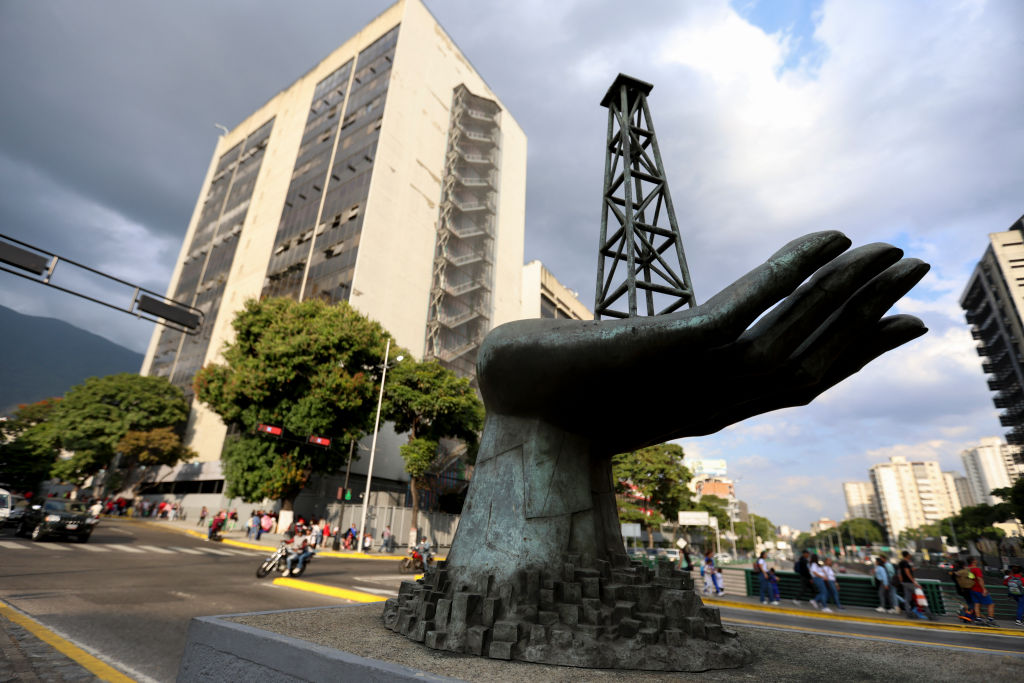Oil and Gas in Latin America: Attracting Investment through Reform
Oil and Gas in Latin America: Attracting Investment through Reform
AS/COA hosted the seminar in which speakers presented different perspectives on oil and gas management in Latin America, highlighting countries that have been increasing their reserves and production by implementing reforms that attract investment, and the challenges that remain.
Welcoming Remarks:
- Susan Segal, President and CEO, Americas Society and Council of the Americas
Speakers:
- Ramón Espinasa, Senior Oil and Gas Specialist, Energy Division, Inter-American Development Bank
- Ted Helms, Executive Manager, Investor Relations, Petrobras
- Lisa Viscidi, Market Intelligence Manager, Americas Energy & Resources, Deloitte
- Nicole Spencer, Director, Energy, Americas Society and Council of the Americas (Moderator)
Summary
On February 10, the Americas Society and Council of the Americas hosted the seminar in which speakers presented different perspectives on oil and gas management in Latin America, highlighting countries that have been increasing their reserves and production by implementing reforms that attract investment, and the challenges that remain, especially concerning improvements in environmental and social practices.
Welcoming remarks
President and CEO of Americas Society and Council of the Americas Susan Segal welcomed the guests and spoke about energy’s “great political and economic impact, not just in Latin America and the Caribbean, but globally.” Segal noted that about 25 percent of U.S. oil imports originate from Latin America. “We are here to talk about Latin America today, but it is also worth noting that Canada alone supplies 25 percent,” said Segal. “So all together the Western Hemisphere accounts for half of all US oil imports.”
AS/COA’s Nicole Spencer opened the discussion by stressing the importance of oil and gas management in Latin America to U.S. energy security, noting that the United States imports less oil from the Middle East than from Latin America.
Oil Sector Performance and Institutional Framework: The Experience of Latin America 2000-2010
Inter-American Development Bank’s Ramon Espinasa opened the discussion by giving an overview of the oil sector in Latin America over the past 10 years, focusing on the relationship between oil sector performance in different Latin American countries and the institutional framework that governs the sector. According to Espinasa, there is a direct relation between price signals, investment, and the number of active drilling rigs. When an investor perceives a price increase, usually the number of active drilling rigs increase, and, therefore, so does supply, all of which improve the sector’s performance. He also stressed that when prices began to increase in 2004, Argentina, Ecuador, Mexico, and Venezuela did not respond to the price signal and their drilling activity actually decreased. On the other hand, from 2004 to 2010, Brazil, Colombia, and Peru have had significant increases in investment, followed by increases in supply. Espinasa added that these different reactions are correlated to the institutional framework of the countries. The oil sectors in the first group of countries are under government control and lack competition while in the second group, the oil sectors are institutionally protected from government intervention and open to competition, which results in better performance.
The Hydrocarbon Industry: the Case of Brazil and Petrobras
Executive Manager for Investor Relations at Petrobras Ted Helms has been working in Latin America for the last five decades. During his presentation on Petrobras, he highlighted the most important factors that led to the transition of Petrobras from a refiner of imported crude in 1953 to self-sufficiency in oil production in 2007. According to Helms, with the end of Petrobras’s monopoly over the oil sector in 1997 and the opening of the oil sector to international firms, Petrobras became an integrated and balanced company. He emphasized the important commitment of Petrobras to its institutional framework and to transparency and openness regarding financial accounts. Nevertheless, he pointed out that Petrobras has succeeded because Brazil has always seen the company as an important asset for the future and used the oil industry as a mean to develop and industrialize the country even before the sector was opened to competition. According to Helms, currently, Brazilian oil production and demand exceed refining capacity. By 2014 exports are estimated to reach nearly one million barrels per day and, with expanded refining capacity, Brazil will be able to meet domestic demand.
Colombia’s Oil and Gas sector: Boosting Output through Reform
Market Intelligence Manager for Americas Energy and Resources at Deloitte Lisa Viscidi addressed the Colombian oil and gas management model, which over the past decade has gone through a series of reforms. According to Viscidi, the fiscal and regulatory reforms implemented in Colombia created stability and security for investors, and, as a result, attracted increased investment and paved the way for greater development of oil and gas resources. She pointed out that around 150 oil companies now operate in the country, with investment in the sector expected to reach about $4 billion in 2010. Viscidi commented that, by the end of 2010, oil production increased significantly to nearly 800,000 barrels per day, and it is projected to reach 1 million barrels per day by 2015. In terms of the future outlook, Viscidi stated that the oil and gas sector faces new challenges and risks, such as the expansion of drilling activity “into ecologically-sensitive and uninhabited areas, including those once avoided because of the presence of armed groups,” and the possibility that, as profits grow, the government will increase its fiscal take for new contracts.








